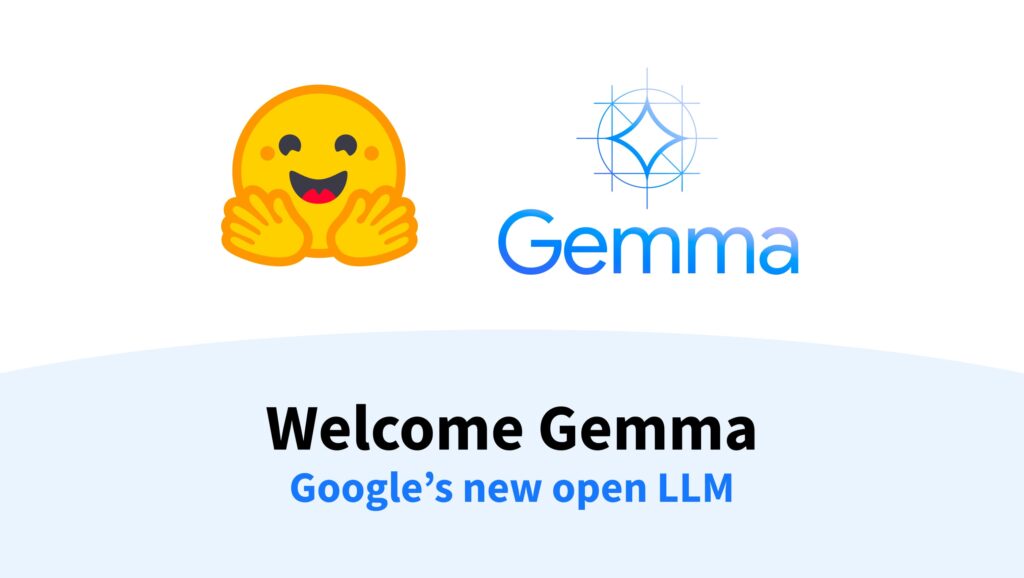Gemma: A New Language Model- In simple words, Artificial Intelligence i.e. AI is changing the world. Computer systems have now started thinking and understanding like humans. In such a situation, AI technology has now started having a big impact on the society and environment.
But it is also true that today’s AI technology is very powerful and is continuously increasing. In such a situation, we have to ensure that this technology is fair, accountable and ethical. Because if this does not happen then AI can also harm us.
Google is also very concerned about how and to what extent power is given to machines. Therefore, Google has created a new language model to meet this challenge – Gemma. Let us know about this model in detail today.
What is Gemma?

Gemma is a language model that can process natural language well. Gemma has been developed by Google Research and was launched in February 2024.
In language models, machines try to understand how humans write, speak or think. For this, these machines have to learn a lot about language. Gemma differs from other language models in two ways – its architecture and its training method.
Gemma’s Graph uses a neural network architecture to better understand relationships between words, sentences, and documents. With this architecture, Gemma also leverages a training method that allows it to learn not only from task-specific data, but also from unlabeled data and knowledge graphs.
Similarly, Gemma’s graph architecture is so powerful that developers can easily adjust it for any domain, language or task. Besides, this network can also train itself according to the data.
Gemma’s Features
Gemma has a variety of features that make it an exceptional and responsible AI technology. For example:
- Adaptability: Gemma can be easily adjusted for any domain, language or task. It does not require manual training. It adapts its graph to input and output data only.
- Explanation: Gemma can explain her own inferences and decisions. It can find out from its graph network which data and evidence have led to which conclusion.
- Control: Gemma gives developers and users the freedom to specify what tone, style, or level of language they want. Ethical principles can also be included.
- Conversation: Gemma can talk to both humans and machines. It senses the operator’s emotions and reactions and adapts its behavior accordingly.
Importance of Gemma
When computer systems are processing data related to humans, they face challenges of bias, privacy, and ethics.
For example, sometimes the data used to train machines may itself be incomplete and biased. Also you know very little about the data, where it comes from and how it is collected. Therefore, machines may ultimately draw some wrong conclusions based on this data.
On the other hand, machines have become so powerful that they acquire human data on large scales. And if this data is considered private and sensitive, then a challenge to privacy arises.
Third, machines’ decisions often directly impact humans. In such a situation, it becomes important what kind of ethical principles they are working under.
In view of all these challenges, there is a need for tools that can make AI development responsible. Responsible AI technology becomes important in terms of fairness, transparency and ethical values. Google’s new Gemma language model is built on this approach.
Benefits of Gemma
Gemma can be applied to many real-world areas where responsible AI development is important, such as health, education, finance, and journalism. Check out some examples:
- Health: In this area Gemma can use accurate, reliable and ethical language for all patient data and decisions. It can also protect the privacy rights of patients.
- Education: Gemma can use relevant, engaging and friendly language with children and teachers. It respects the diversity and abilities of children.
- Finance: Gemma can use transparent, secure and customer-focused language in financial services. This increases people’s confidence.
- Journalism: Gemma can use language that is trustworthy, accurate and at the same time takes into account ethical issues when reporting news.
This way developers can get many benefits from Gemma:
- Increasing user and public trust: Gemma can show people that machines’ decisions are fair, accountable and ethical.
- Adhering to legal standards: Gemma allows developers to comply with regulations such as the EU AI Regulation.
- Improve your products and services: Gemma’s compatibility allows developers to make their products and services better and more effective.
Gemma’s Challenges
Although Gemma has many benefits and opportunities, it also has some challenges and limitations that need to be addressed:
Data quality and availability: Gemma requires high quality and diverse data to train. But sometimes such data is difficult to get or its cost is very high. Also, the data received may contain noise, incomplete information or old data. In such a situation, Gemma’s ability may be affected.
Model complexity and scalability: Gemma’s graph network architecture and self-service training methods demand considerable computational capacity and resources. This may be difficult to implement on a large scale. Also its graph is not easy to understand and debug.
Human monitoring and influence: Gemma’s language output and input may not always be perfect. These are influenced by data, task, situation and user. Therefore Gemma’s outputs and inputs must be verified and validated by human experts. Their feedback and guidance can help Gemma improve further.
Addressing these challenges will be important for Gemma’s developers. But Gemma’s powerful capabilities will nonetheless be of great help to responsible AI development.
Conclusion
This blog post has given us detailed information about Google’s new Gemma language model. We understood what Gemma is and what are its special features. It also revealed how this model can be helpful for responsible AI development.
 Skip to content
Skip to content










